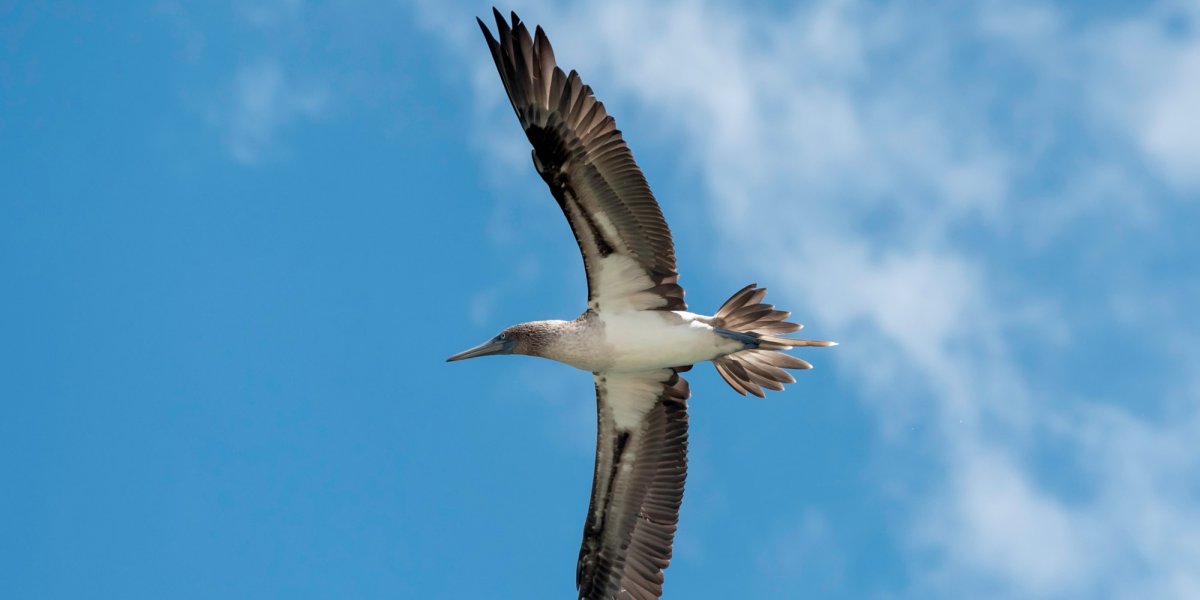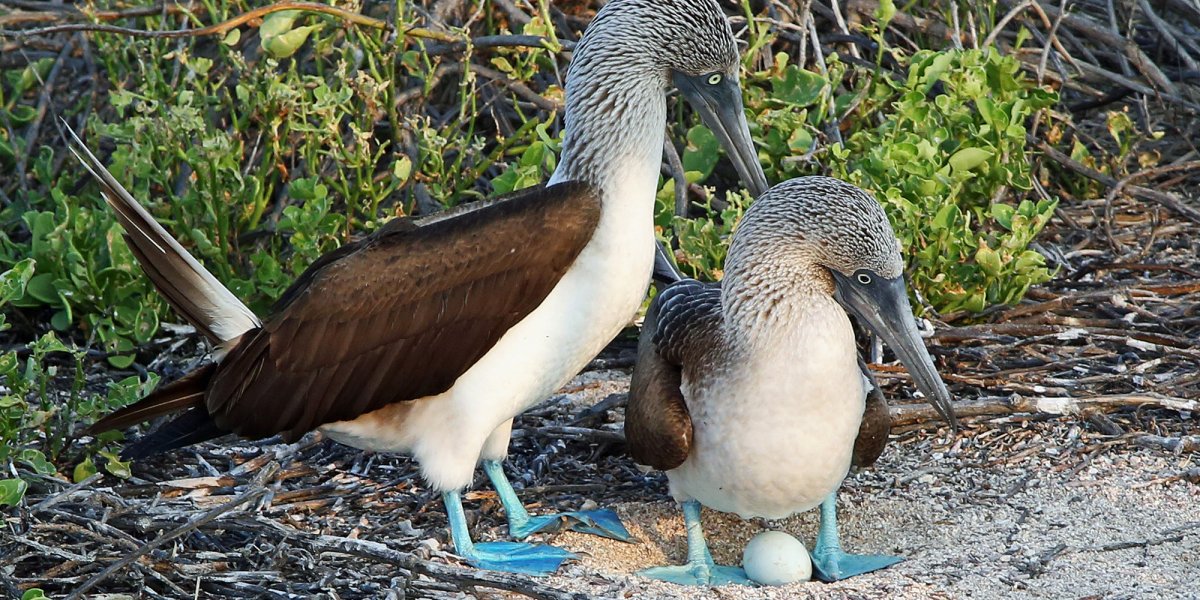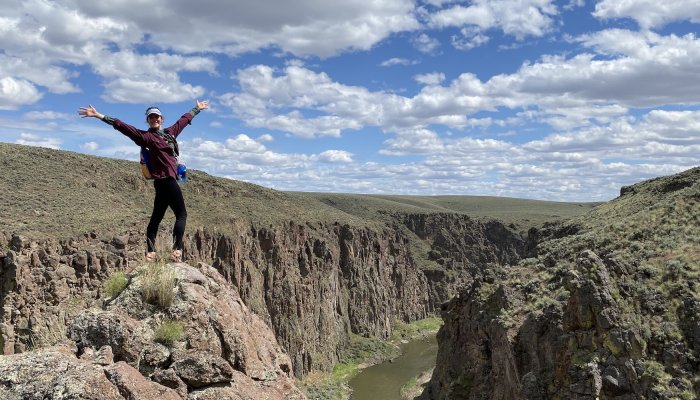Scientific name: Sula nebouxii
Trips: Galapagos Unbound Tour
Likelihood of sightings: Very high

Aptly named for their bright blue feet, these iconic boobies inhabit both Española and North Seymour Islands in the Galapagos archipelago, although they can be seen hunting across the islands. They are not endemic to the Galapagos, but the archipelago supports around half of their global breeding pairs, with the rest found on the western coasts of mainland South and Central America.
The name “booby” comes from the Spanish word bobo, which translates as “clown” or “fool”. It’s a reference to the clumsiness of boobies on land, with these seabirds only coming to shore to rear their young and being much more graceful in the air or under the water.
Aside from their blue feet, blue-footed boobies are distinguished by long and pointed brown wings and a light brown neck and head, with a pure white underside and belly. The Galapagos blue-footed boobies are slightly larger than other subspecies, with a lighter plumage around their neck and heads. The blue color of their feet is due to carotenoid pigments from their diet of fresh fish, with the carotenoids acting as antioxidants and stimulants for the bird’s immune system.

As part of their mating rituals, male blue-footed boobies show off their feet to prospective females by doing a high strutting walk, stomping their feet up and down. Because the foot brightness relates to their health, males that exhibit bluer feet are usually more successful at finding a partner. Females tend to be slightly larger than males, with a wingspan up to around five feet, although males have a larger tail that makes them more adept at diving.
Blue-footed boobies dine mostly on fish such as sardines, mackerel and anchovies, as well as squid, which they retrieve by diving and sometimes swimming underwater in groups. For this reason, their nostrils are permanently closed and they breathe through the corners of their mouth. After one booby spots a fish shoal in the water, they will identify the rest of the flock and dive in unison from heights of up to 300 feet.
Blue-footed boobies hit the water at around 60 miles per hour and have been known to plunge dive to depths of more than 80 feet, with special air sacs to protect their brains from the excessive pressure. While they hunt in groups, most boobies will eat alone (and sometimes when they are still underwater) before regurgitating the food for their young.
Female blue-footed boobies usually lay two or three eggs at a time (about four to five days apart) and, unlike most birds, their eggs will hatch at different times. This results in a disparity in growth and size between siblings, with blue-footed boobies an important species for scientists studying siblicide related to food scarcity. Parents will share the rearing responsibilities, although the male will initially provide food due to his purpose-designed diving tail.




